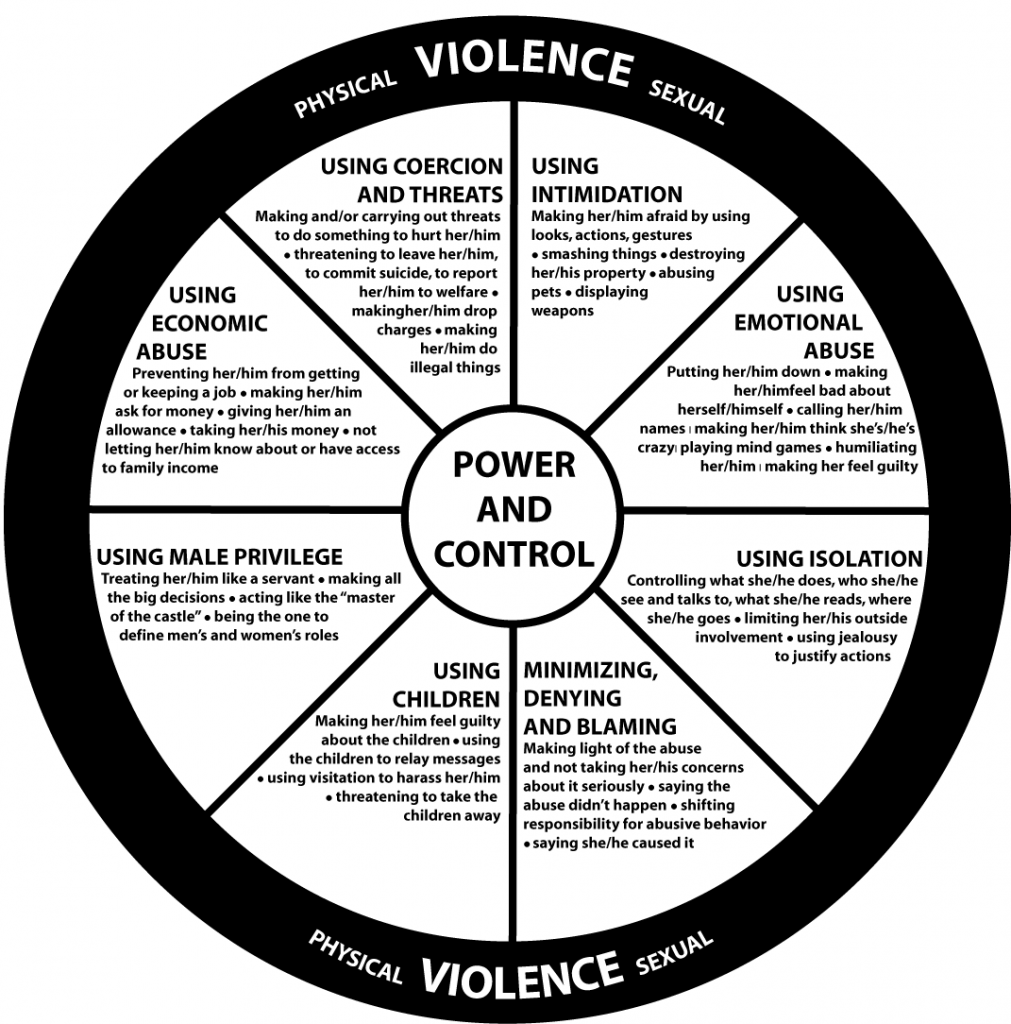This is an informational fact sheet.
If you are looking for shelter, advocacy support services, or legal assistance, please click here to visit our FIND HELP directory.
Anyone can experience domestic violence, including men and people of all gender identities.
Trans people, particularly trans women of color, experience harassment, assault, discrimination, and homicide at significantly higher rates than the overall population.|LS|1|RS||LS|2|RS|
Domestic violence is a pattern of coercive and/or violent tactics perpetrated by one person against a family member or intimate partner, with the goal of establishing and maintaining power and control over that person.
Domestic violence can happen in all kinds of intimate relationships, including married couples, people who are dating, couples who live together, people with children in common, same-sex or gender-nonconforming partners, people who were formerly in a relationship with the person abusing them, and teen dating relationships.
Domestic violence does not discriminate. Anyone of any race, age, sexual orientation, religion or gender can be a victim – or perpetrator – of domestic violence. It can happen to people who are married, living together or who are dating. It affects people of all socioeconomic backgrounds and education levels.
Domestic violence includes behaviors that physically harm, arouse fear, prevent a partner from doing what they wish or force them to behave in ways they do not want. It includes the use of physical and sexual violence, threats and intimidation, emotional abuse and economic deprivation. Many of these different forms of domestic violence/abuse can be occurring at any one time within the same intimate relationship.
—The National Domestic Violence Hotline
Information for survivors and victims
Types of domestic violence
Abusive behaviors ARE NOT symptoms that someone is angry or out of control. An abuser makes a deliberate choice to exert power and control over their partner.
Domestic violence is a PATTERN
The Power and Control Wheel (below) illustrates the range of tactics and behaviors that abusers often employ.

Batterers’ intervention programs
In some jurisdictions, convicted domestic violence offenders may be ordered by the court to attend a batters’ intervention program (BIP) for a specified amount of time. Batterers’ intervention programs attempt to educate abusers about the impact and implications of their behavior, with the goal of encouraging abusers to change their behavior.
The success rates of batterers’ intervention programs vary widely and are difficult to measure, but the Coalition welcomes these programs, particularly those that work in collaboration with their local victim advocacy programs, as components of coordinated community responses to domestic violence.
Note that batterers’ intervention programs are NOT comparable to anger management classes or marriage counseling, both of which are unsuitable and potentially dangerous responses to domestic violence. Domestic violence is not caused by uncontrolled anger or interpersonal conflict; domestic violence is both a crime and a choice, specifically the choice by abusers to use methods of physical, emotional, sexual, social and/or financial abuse to wield power and control over their victims.
Statewide standards for batterers’ intervention programs are set forth within various Oregon Administrative Rules (OARs), which are maintained and enforced by the Batterer Intervention Program (BIP) Advisory Committee, a multi-disciplinary leadership body housed within the Oregon Department of Justice – Crime Victims’ Services Division.
External links and additional resources
Domestic violence effects of
Domestic violence escaping from
Domestic violence prevalence of